|
| | Mathison Museum of Natural History |  |
|
+12landrover Kikimalou bmathison1972 Taos widukind Jill Duck-Anch-Amun lucky luke Caracal rogerpgvg Roger Bloodrayne 16 posters | |
| Author | Message |
|---|
bmathison1972
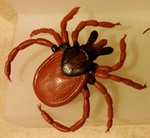
Country/State : Salt Lake City, UT
Age : 52
Joined : 2010-04-13
Posts : 6718
 |  Subject: Re: Mathison Museum of Natural History Subject: Re: Mathison Museum of Natural History  Sun Feb 11, 2024 12:47 pm Sun Feb 11, 2024 12:47 pm | |
| Species: Adalia bipunctata (Linnaeus, 1758) Common name(s): two-spotted lady beetle About the Figure: Manufacturer: Wing Mau Series: Insects Year of Production: unknown Size/Scale: Body length (excluding appendages) approximately 3.8 cm for a scale of 10.9:1-5.4:1 Frequency of species in toy/figure form (at time of posting): Very rare (unique for this set) Miscellaneous Notes: The Wing Mau Insects collection consists of 24 figures representing 23 species of beetles (today's A. bipunctata is the only duplicated species). The figures have the Latin name printed on the underside. The figures seem to have been influenced by an Italian poster, Beetles, from 1992, as all the species are represented in that poster (including both variants of A. bipunctata) and have the same Latin names assigned to them. This poster hangs in my home office; I've had it since 1995. Some figures in this set were also produced for Play Visions for their Habitat Earth line. Most of the species in this Wing Mau collection are unique, at least as sculpts. Interestingly, even though these two figures today both represent A. bipunctata, they are different sculpts and not merely the same sculpt repainted. In nature, A. bipunctata exhibits extreme variation in color. Wing Mau beetles are often released with different paint jobs and I have also seen a solid black version of this species. About the Animal: Geographic distribution: Holarctic Habitat: Highly variable as long as adequate vegetation and prey is available, including deciduous and mixed forests and forest margins, coastal dunes, grasslands, fields, parks, gardens Diet: Aphids and other small, soft-bodied insects IUCN Status (at time of posting): Not Evaluated Miscellaneous Notes: Populations of A. bipunctata in North America appear to be narrowing and declining. In New York state, it is considered a 'Species of Greatest Conservation Need (SGCN)'. It is believed its decline is due to competition with established non-native species, such as Coccinella septempunctata and possibly Harmonia axyridis. [You must be registered and logged in to see this image.] |
|   | | widukind
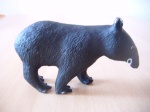
Country/State : Germany
Age : 48
Joined : 2010-12-30
Posts : 45779
 |  Subject: Re: Mathison Museum of Natural History Subject: Re: Mathison Museum of Natural History  Mon Feb 12, 2024 12:23 pm Mon Feb 12, 2024 12:23 pm | |
| |
|   | | widukind

Country/State : Germany
Age : 48
Joined : 2010-12-30
Posts : 45779
 |  Subject: Re: Mathison Museum of Natural History Subject: Re: Mathison Museum of Natural History  Mon Feb 12, 2024 12:25 pm Mon Feb 12, 2024 12:25 pm | |
| - bmathison1972 wrote:
- widukind wrote:
- Interesting, i believe i dont know the serie. What are the other figures?
[You must be registered and logged in to see this link.], this is the set:
[You must be registered and logged in to see this image.]
Next up:
Species: Hasarius adansoni (Audouin, 1826)
Common name(s): Adanson's house jumper
About the Figure:
Manufacturer: Toys Spirits
Series: 3D Picture Book Spiders of the World
Year of Production: 2022
Size/Scale: Body length (excluding appendages) approximately 3.2 cm for a scale of 8:1-4.2:1 for a male specimen (see below)
Frequency of species in toy/figure form (at time of posting): Very rare
Miscellaneous Notes: This is the second time we've seen H. adansoni in the Museum. Figures in this collection come in small paper boxes designed to look like books. Each book itself is a 'strap' figure that can be worn as a keychain. Within each book is biological information on the species. The background page for the figure can be cut out and attached to a plastic base that serves as a diorama on which to display the figure (see inset). I did a step-by-step reveal of the entire presentation when I reviewed the set on the Animal Toy Blog. Hasarius adansoni is sexually dimorphic and this figure was modeled after a male specimen.
About the Animal:
Geographic distribution: Believed to be native to Middle East and/or or Africa, now occurs over much of the world in warmer climates
Habitat: Woodlands, fields, orchards, parks, gardens, greenhouses, human habitations
Diet: Small insects and spiders
IUCN Status (at time of posting): Least Concern
Miscellaneous Notes: Being an synanthropic species, H. adansoni has been introduced to much of the world via human activity. It is believed to be native to the Middle East and/or Africa but now occurs throughout the Americas, in Western, Central, and Mediterranean Europe, India, Laos, Vietnam, China, Japan, Taiwan, Australia, and several Pacific Islands, among other places. Where temperatures are cooler, the house jumper is often found in artificial climates, such as in greenhouses or homes.
[You must be registered and logged in to see this image.] Thank you, now i know it |
|   | | bmathison1972

Country/State : Salt Lake City, UT
Age : 52
Joined : 2010-04-13
Posts : 6718
 |  Subject: Re: Mathison Museum of Natural History Subject: Re: Mathison Museum of Natural History  Mon Feb 12, 2024 12:39 pm Mon Feb 12, 2024 12:39 pm | |
| Species: † Otodus megalodon (Agassiz, 1835) Common name(s): megalodon About the Figure: Manufacturer: CollectA Series: Prehistoric Life - Deluxe Year of Production: 2020 Size/Scale: Body length approximately 29.0 cm for a scale of 1:49-1:69 (see below) Frequency of species in toy/figure form (at time of posting): Uncommon Miscellaneous Notes: The bottom jaw is articulated. We have no idea how long O. megalodon was. The scale above is calculated based on a body length of 14.2-20.0 meters. That maximum length is based on studies from 2021 and 2022. I am sure the scale will fluctuate as we/if we ever learn more about the actual size of the animal. About the Animal: Geographic distribution: Early Miocene-Early Pliocene; worldwide in seas and oceans at the time Habitat: Pelagic Diet: Opportunistic, indiscriminate predator; prey probably included cetaceans, sea turtles, sirenians, seals, fish IUCN Status (at time of posting): N/A [prehistoric] Miscellaneous Notes: There are four species currently assigned to the genus Otodus. The evolution of this clade is characterized by changes in the teeth, notably an increase in serrations, a widening of the crown, formation of a more triangular shape, and the disappearance of lateral cusps. This shift is believed to be related to a shift in predation, from a tear-grasping bite to a cutting bite that corresponds with a shift in prey from fish to cetaceans. [You must be registered and logged in to see this image.][/i] |
|   | | widukind

Country/State : Germany
Age : 48
Joined : 2010-12-30
Posts : 45779
 |  Subject: Re: Mathison Museum of Natural History Subject: Re: Mathison Museum of Natural History  Tue Feb 13, 2024 10:29 am Tue Feb 13, 2024 10:29 am | |
| |
|   | | bmathison1972

Country/State : Salt Lake City, UT
Age : 52
Joined : 2010-04-13
Posts : 6718
 |  Subject: Re: Mathison Museum of Natural History Subject: Re: Mathison Museum of Natural History  Tue Feb 13, 2024 11:46 am Tue Feb 13, 2024 11:46 am | |
| Species: Cambarellus patzcuarensis Villalobos, 1943 Common name(s): Mexican dwarf crayfish About the Figure: Manufacturer: Banjihan ACE Series: Mexican Dwarf Crayfish Year of Production: unknown Size/Scale: Body length (excluding appendages) approximately 3.5, within scale 1:1 Frequency of species in toy/figure form (at time of posting): Very rare (unique as a set/sculpt) Miscellaneous Notes: There are six figures in the set, all color variants of the same sculpt. Cambarellus patzcuarensis is popular in the aquarium trade and most of the figures in the set represent domestic morphotypes. I chose the 'brown' version since it's closest to the wild type. About the Animal: Geographic distribution: Mexico (Michoacán) Habitat: Freshwater lakes and springs Diet: Plants, detritus, aquatic invertebrates IUCN Status (at time of posting): Endangered Miscellaneous Notes: Cambarellus patzcuarensis is endemic to Lake Pátzcuaro in Michoacán, Mexico and neighboring springs in places like Chapultepec, Opopeo, and Tzurumutaro. While popular in the pet trade, it is endangered in its native range due to habitat loss and alteration. [You must be registered and logged in to see this image.] |
|   | | widukind

Country/State : Germany
Age : 48
Joined : 2010-12-30
Posts : 45779
 |  Subject: Re: Mathison Museum of Natural History Subject: Re: Mathison Museum of Natural History  Tue Feb 13, 2024 12:02 pm Tue Feb 13, 2024 12:02 pm | |
| Another unknown brand with phantastic figures |
|   | | Caracal
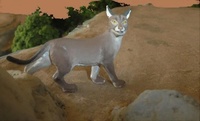
Country/State : France
Age : 65
Joined : 2018-10-24
Posts : 7261
 | |   | | bmathison1972

Country/State : Salt Lake City, UT
Age : 52
Joined : 2010-04-13
Posts : 6718
 |  Subject: Re: Mathison Museum of Natural History Subject: Re: Mathison Museum of Natural History  Wed Feb 14, 2024 11:39 am Wed Feb 14, 2024 11:39 am | |
| Species: Cairina moschata (Linnaeus, 1758) Common name(s): domestic Muscovy duck About the Figure: Manufacturer: Papo Series: Farm Life Year of Production: 2023 Size/Scale: Scale difficult to calculate because of the animal's posture, but measured along midline the body length is approximately 9.5 cm for a scale of 1:7-1:9 Frequency of species in toy/figure form (at time of posting): Unique Miscellaneous Notes: This figure was specifically marketed as a domestic Muscovy duck, C. moschata var. domestica, but that name isn't valid as a formal subspecies under the rules of the ICZN (see below). About the Animal: Geographic distribution: Central and South America, from southern Texas (Rio Grande Valley) to Argentina and Uruguay; feral domestic populations occur throughout the world, including North America, Caribbean, Europe, eastern Australia, New Zealand Habitat: Forested swamps, lakes, streams, wet grasslands, agricultural fields, urban and suburban parks Diet: Primarily plant material, including both aquatic and terrestrial plants; also fish, amphibians, reptiles, and freshwater and terrestrial invertebrates IUCN Status (at time of posting): Least Concern Miscellaneous Notes: Cairina moschata is believed to have been first domesticated in Brazil, prior to European discovery in the late 1490s. It was bred primarily for meat and today it is often referred to as a Barbary duck in a culinary context. The Muscovy duck is the only domestic duck not derived from mallard stock, although domestic Muscovy ducks and mallards will sometimes crossbreed, resulting in the mulard. The domestic form is sometimes given subspecies status ( C. m. domestica), but more commonly it is only considered a form or variety. The subspecies name was first coined by R. A. Donkin in 1989 in his book on the origin and dispersal of the domestic Muscovy duck, but because the name was not assigned per the rules set forth in the International Code of Zoological Nomenclature, the combination is considered invalid. [You must be registered and logged in to see this image.] |
|   | | Caracal

Country/State : France
Age : 65
Joined : 2018-10-24
Posts : 7261
 | |   | | bmathison1972

Country/State : Salt Lake City, UT
Age : 52
Joined : 2010-04-13
Posts : 6718
 |  Subject: Re: Mathison Museum of Natural History Subject: Re: Mathison Museum of Natural History  Thu Feb 15, 2024 11:42 am Thu Feb 15, 2024 11:42 am | |
| Species: Apis mellifera Linnaeus, 1758 Common name(s): western honey bee; European honey bee About the Figure: Manufacturer: Safari Ltd. Series: Safariology - Life Cycle of a Honey Bee Year of Production: 2012 Size/Scale: Egg chamber 5.7 cm tall; individual egg approximately 2.3 cm long. Larva approximately 4.5 cm wide. Pupa approximately 5.4 cm long. Body length of adult (excluding appendages and wings) approximately 5.8 cm for a scale of 4.8:1-3.9:1 for a worker. Larva and pupa are in relative scale with adult. Egg larger, approximately 23:1-15.3:1 in scale. Frequency of species in toy/figure form (at time of posting): Common Miscellaneous Notes: This is the sixth time we've seen A. mellifera in the Museum, and the second time we've seen a life cycle of the species (I have four). For a brief period, the adult from this set was sold individually with a slightly different paint job in Safari's Hidden Kingdom Insects line. About the Animal: Geographic distribution: Nearly worldwide. Believed to be native to Africa and/or Central Asia, with natural spread throughout Africa and Europe; introduced to the Western Hemisphere, Australia, New Zealand, and East Asia for honey production. Habitat: Highly varied; anywhere with suitable hive-building sites and flowers for food source. Diet: Larvae are fed pollen by the adults; adults eat nectar and pollen IUCN Status (at time of posting): Data Deficient Miscellaneous Notes: The average developmental time for a worker honey bee is 21-22 days. Oviposition to hatching of the egg is approximately 3 days. The bee then spends about 6 days as a larva. The larva is fed 'royal jelly' for the first couple days and then a blend of honey and pollen ('bee bread') for the remainder of the larval stage (potential queens will get royal jelly throughout their development and after emergence). After the pupal cell is capped, the bee spends 10-11 days as a pupa, eventually emerging as an adult. [You must be registered and logged in to see this image.] |
|   | | bmathison1972

Country/State : Salt Lake City, UT
Age : 52
Joined : 2010-04-13
Posts : 6718
 |  Subject: Re: Mathison Museum of Natural History Subject: Re: Mathison Museum of Natural History  Fri Feb 16, 2024 11:48 am Fri Feb 16, 2024 11:48 am | |
| Species: Allactaga sibirica (Forster, 1778) Common name(s): Mongolian five-toed jerboa; Siberian jerboa About the Figure: Manufacturer: Furuta Series: Chocoegg Funny Animals Series 1 Year of Production: 2002 Size/Scale: Total figure length approximately 6.5 cm. Using hind foot as a metric (n=2.0 cm), scale comes to approximately 1:3.6-1:3.8 Frequency of species in toy/figure form (at time of posting): Unique Miscellaneous Notes: Online references refer to this figure as the Baluchistan pygmy jerboa ( Salpingotulus michaelis). However, based on the size of the ears in relation to the head, that identification does not seem to be correct. There are several identification inconsistencies with figures from this set online. Whether these errors are on behalf of Furuta or collectors who post their collections online, I am not sure. For a while, several of us assumed it was a long-eared jerboa ( Euchoreutes naso) but again, based on length of the ears in relation to the head, that ID doesn’t seem right, either. Looking more closely at the ratio of head and ears, to me this figure looks most like something in the genus Allactaga. I am databasing mine as A. sibirica (syn. Orientallactaga sibirica) as it’s the most widespread species in the genus. Being one of the original Chocoegg figures, assembly is required.. About the Animal: Geographic distribution: Central Asia (China, Kazakhstan, Kyrgyzstan, Mongolia, Turkmenistan, Uzbekistan, Siberia) Habitat: Deserts, semi-deserts, forest-steppes, steppes Diet: Plants (leaves, seeds, roots), insects and arachnids IUCN Status (at time of posting): Least Concern Miscellaneous Notes: Like many other arid-adapted rodents, A. sibirica does not need to drink water as it gets all of the water it needs from the food it eats. [You must be registered and logged in to see this image.] |
|   | | Caracal

Country/State : France
Age : 65
Joined : 2018-10-24
Posts : 7261
 |  Subject: Re: Mathison Museum of Natural History Subject: Re: Mathison Museum of Natural History  Fri Feb 16, 2024 1:12 pm Fri Feb 16, 2024 1:12 pm | |
| |
|   | | Kikimalou
Admin
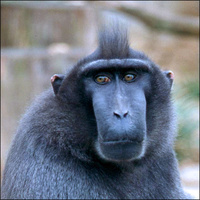
Country/State : Lille, FRANCE
Age : 60
Joined : 2010-04-01
Posts : 21190
 |  Subject: Re: Mathison Museum of Natural History Subject: Re: Mathison Museum of Natural History  Fri Feb 16, 2024 5:18 pm Fri Feb 16, 2024 5:18 pm | |
| - bmathison1972 wrote:
- Species: Allactaga sibirica (Forster, 1778)
Common name(s): Mongolian five-toed jerboa; Siberian jerboa
Miscellaneous Notes: Online references refer to this figure as the Baluchistan pygmy jerboa (Salpingotulus michaelis). However, based on the size of the ears in relation to the head, that identification does not seem to be correct. There are several identification inconsistencies with figures from this set online. Whether these errors are on behalf of Furuta or collectors who post their collections online, I am not sure. For a while, several of us assumed it was a long-eared jerboa ( Euchoreutes naso) but again, based on length of the ears in relation to the head, that ID doesn’t seem right, either. Looking more closely at the ratio of head and ears, to me this figure looks most like something in the genus Allactaga. I am databasing mine as A. sibirica (syn. Orientallactaga sibirica) as it’s the most widespread species in the genus. Being one of the original Chocoegg figures, assembly is required..
Your choice does make sense. It's even advisable to change TAW. |
|   | | bmathison1972

Country/State : Salt Lake City, UT
Age : 52
Joined : 2010-04-13
Posts : 6718
 |  Subject: Re: Mathison Museum of Natural History Subject: Re: Mathison Museum of Natural History  Sat Feb 17, 2024 1:25 pm Sat Feb 17, 2024 1:25 pm | |
| Species: Dryocopus martius (Linnaeus, 1758) Common name(s): black woodpecker About the Figure: Manufacturer: Kaiyodo Series: Natural Monuments of Japan Year of Production: 2002 Size/Scale: Total figure height about 6.5 cm. Scale difficult to calculate but body length approximately 8.5 cm for a scale of 1:5.3-1:6.5. Frequency of species in toy/figure form (at time of posting): Very rare Miscellaneous Notes: From what I can tell, no assembly required. Kaiyodo also produced this species for their Chocoegg Animatales line. About the Animal: Geographic distribution: Eurasia Habitat: Old-growth coniferous, subtropical, and boreal forests Diet: Insects; primarily carpenter ants, but also beetle larvae and other insects in wood IUCN Status (at time of posting): Least Concern Miscellaneous Notes: Dryocopus martius is a specialist on carpenter ants, although it will eat any insects it finds within wood, such as beetle larvae. It fills the same ecological niche in Europe as the related pileated woodpecker ( D. pileatus) in the Nearctic and lineated woodpecker ( D. lineatus) in the Neotropics. [You must be registered and logged in to see this image.]
Last edited by bmathison1972 on Sun Feb 18, 2024 5:44 pm; edited 1 time in total |
|   | | widukind

Country/State : Germany
Age : 48
Joined : 2010-12-30
Posts : 45779
 |  Subject: Re: Mathison Museum of Natural History Subject: Re: Mathison Museum of Natural History  Sat Feb 17, 2024 2:21 pm Sat Feb 17, 2024 2:21 pm | |
| A figure from one of my alltime favourites |
|   | | rogerpgvg
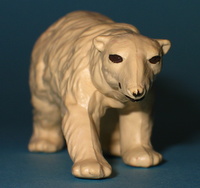
Country/State : UK
Age : 54
Joined : 2016-04-29
Posts : 3897
 |  Subject: Re: Mathison Museum of Natural History Subject: Re: Mathison Museum of Natural History  Sat Feb 17, 2024 9:09 pm Sat Feb 17, 2024 9:09 pm | |
| Beautiful model and photo! |
|   | | bmathison1972

Country/State : Salt Lake City, UT
Age : 52
Joined : 2010-04-13
Posts : 6718
 |  Subject: Re: Mathison Museum of Natural History Subject: Re: Mathison Museum of Natural History  Sun Feb 18, 2024 1:09 pm Sun Feb 18, 2024 1:09 pm | |
| Species: Conger myriaster (Brevoort, 1856) Common name(s): whitespotted conger; common Japanese conger About the Figure: Manufacturer: Yujin Series: Saltwater Fish Pictorial Book 2 Year of Production: unknown Size/Scale: Measured along midline, body length approximately 11.5 cm for a scale of 1:7-8.7 Frequency of species in toy/figure form (at time of posting): Unique Miscellaneous Notes: The eel sits loosely on its base. The base also came with a section of line, hook, and worm, as if it was being fished for, but I chose not to display the figure like that. About the Animal: Geographic distribution: Northwest Pacific (Japan, Korean Peninsula, China) Habitat: Bathydemersal; usually in sandy and muddy areas at depths to 320-830 meters Diet: Fish, crustaceans IUCN Status (at time of posting): Least Concern Miscellaneous Notes: Conger myriaster is one of the most valuable fishery species in the waters around China, Japan, and the Korean Peninsula. The annual haul from the Yellow and East China seas averages 13,000 tonnes. In sushi and sashimi, it is referred to as anago. [You must be registered and logged in to see this image.] |
|   | | widukind

Country/State : Germany
Age : 48
Joined : 2010-12-30
Posts : 45779
 |  Subject: Re: Mathison Museum of Natural History Subject: Re: Mathison Museum of Natural History  Sun Feb 18, 2024 2:54 pm Sun Feb 18, 2024 2:54 pm | |
| |
|   | | Kikimalou
Admin

Country/State : Lille, FRANCE
Age : 60
Joined : 2010-04-01
Posts : 21190
 |  Subject: Re: Mathison Museum of Natural History Subject: Re: Mathison Museum of Natural History  Sun Feb 18, 2024 4:51 pm Sun Feb 18, 2024 4:51 pm | |
| Yujin was really a great brand in the 2000's |
|   | | bmathison1972

Country/State : Salt Lake City, UT
Age : 52
Joined : 2010-04-13
Posts : 6718
 |  Subject: Re: Mathison Museum of Natural History Subject: Re: Mathison Museum of Natural History  Mon Feb 19, 2024 1:33 pm Mon Feb 19, 2024 1:33 pm | |
| Species: Sittiparus owstoni (Ijima, 1893) Common name(s): Owston's tit; Izu tit About the Figure: Manufacturer: Kaiyodo Series: Choco Q Animatales Series 11 Year of Production: 2006 Size/Scale: Body length approximately 6.5 cm for a scale of 1:2-1:2.3 Frequency of species in toy/figure form (at time of posting): Unique Miscellaneous Notes: Kaiyodo originally produced two versions of this figure, which at the time represented two subspecies of the varied tit ( S. varius), the nominate form ( S. v. varius) and Owston's tit ( S. v. owstoni). In 2014, three subspecies of S. varius were given species-level rank, including Owston's tit (see below). I also have the 'true' S. varius figure and it will be featured at a later date. Being one of the original Choco Q Animatales figures, assembly is required. About the Animal: Geographic distribution: Japan (Miyakejima, Mikurajima, and Hachijojima Islands in the Izu Archipelago) Habitat: Evergreen broadleaf forest, coniferous and mixed forest, bamboo forest Diet: Seeds, nuts, insects (especially caterpillars) IUCN Status (at time of posting): Endangered Miscellaneous Notes: In 2014, the varied tit ( Sittiparus varius) was divided into four species based on morphological and molecular data (mitochondrial and nuclear DNA analyses). The four species are as follows: varied tit, S. varius (widespread in Japan, central and southern Korean Peninsula, northeastern China, Russian Kuriles); Owston's tit, S. owstoni (endemic to the Japanese islands of Miyakejima, Mikurajima, and Hachijojima in the Izu Archipelago); chestnut-bellied tit, S. castaneoventris (endemic to Taiwan); Iriomote tit, S. olivaceus (endemic to the Yaeyama Islands of Japan). The varied tit still has five extant and one extinct subspecies. The nominate subspecies ( S. v. varius) is widespread, being found in the southern Kuriles, northeastern China, Korea Peninsula, and much of Japan. The remaining extant subspecies are all endemic to one or a few Japanese islands: S. v. sunsunpi (Tanegashima), S. v. namiyei (Toshima, Niijima, Kōzu-shima), S. v. yakushimensis (Yakushima), and S. v. amamii (Amami Ōshima, Tokunoshima, Okinawa). The last subspecies, S. v. orii, was endemic to the Japanese Daitō Islands (Kitadaitōjima, Minami Daitōjima) and became extinct around 1940. [You must be registered and logged in to see this image.] |
|   | | widukind

Country/State : Germany
Age : 48
Joined : 2010-12-30
Posts : 45779
 |  Subject: Re: Mathison Museum of Natural History Subject: Re: Mathison Museum of Natural History  Mon Feb 19, 2024 3:36 pm Mon Feb 19, 2024 3:36 pm | |
| |
|   | | bmathison1972

Country/State : Salt Lake City, UT
Age : 52
Joined : 2010-04-13
Posts : 6718
 |  Subject: Re: Mathison Museum of Natural History Subject: Re: Mathison Museum of Natural History  Tue Feb 20, 2024 11:37 am Tue Feb 20, 2024 11:37 am | |
| Species: Anthopleura fuscoviridis Carlgren, 1949 Common name(s): Japanese green flower About the Figure: Manufacturer: Ikimon Series: Nature Techni Colour - Seaside Creatures Vol. 1 Year of Production: 2018 Size/Scale: Diameter of base approximately 3.0 cm for a scale of 1:1-1:3.3 Frequency of species in toy/figure form (at time of posting): Very rare (unique as a sculpt) Miscellaneous Notes: This same sculpt was reissued in the Seaside Creatures Vol. 2 collection in 2019, albeit colored brown instead of green. Both figures are also magnets. About the Animal: Geographic distribution: Japan (southwest Hokkaido to Kyushu) Habitat: Intertidal rock crevices and hollows Diet: Marine invertebrates, small fish IUCN Status (at time of posting): Not Evaluated Miscellaneous Notes: Like many other sea anemones, A. fuscoviridis has toxins in its tentacles for immobilizing prey. Two of these toxins, Delta-actitoxin-Afv1a and Delta-actitoxin-Afv1b, are neurotoxins that bind voltage-gated sodium channels (VGSCs/NaVs), thus delaying their activation. These toxins may turn out to be useful medically in managing cardiovascular and neurologic disorders associated with VGSCs/NaVs. [You must be registered and logged in to see this image.] |
|   | | landrover
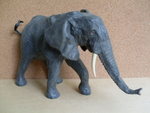
Country/State : colombia
Age : 66
Joined : 2010-11-04
Posts : 5897
 |  Subject: Re: Mathison Museum of Natural History Subject: Re: Mathison Museum of Natural History  Tue Feb 20, 2024 4:30 pm Tue Feb 20, 2024 4:30 pm | |
| Congratulations, this beautiful green flower is a very rare figure. Nice photo too .   |
|   | | rogerpgvg

Country/State : UK
Age : 54
Joined : 2016-04-29
Posts : 3897
 |  Subject: Re: Mathison Museum of Natural History Subject: Re: Mathison Museum of Natural History  Tue Feb 20, 2024 8:39 pm Tue Feb 20, 2024 8:39 pm | |
| Great model. I had never seen it. |
|   | | Sponsored content
 |  Subject: Re: Mathison Museum of Natural History Subject: Re: Mathison Museum of Natural History  | |
| |
|   | | | | Mathison Museum of Natural History |  |
|
Similar topics |  |
|
| | Permissions in this forum: | You cannot reply to topics in this forum
| |
| |
| |
